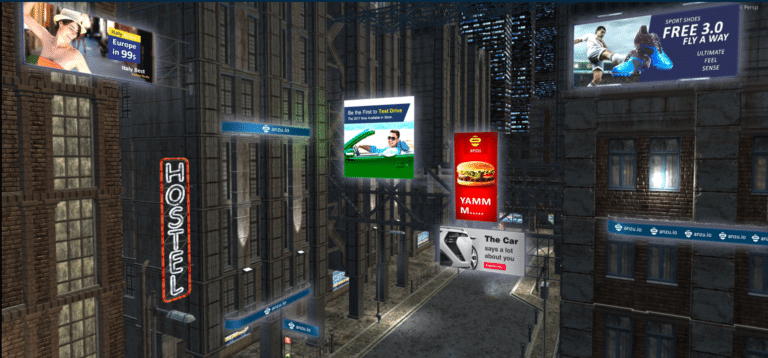
AR and VR will apply to lots of areas, including consumer and enterprise. But what about advertising? As we discussed with Anzu, the opportunity is to bring more immersive (and native) capability to ads, such as checking out a new car.
But what about local advertising specifically? We’re talking small businesses and big brands that target specific geographies. It’s a $150 billion market, and is particularly conducive to AR, given the technology’s ability to qualify purchase decisions in the commerce-heavy offline world.
One way to gauge that opportunity is to examine how local advertisers view AR and VR as ad mediums today. And for that, we turn to survey data that Street Fight recently published through its Local Merchant Survey and Enterprise Local Marketing Survey (both below).
The former involves small businesses (SMBs) and the latter measures larger brands who localize their ad campaigns. For both groups, interest in AR and VR is still relatively low: Among SMBs, 18 percent are interested in AR & VR. Among larger brands, 12 percent indicated interest.


Though low interest isn’t surprising in early days of immersive technologies, it is surprising that SMBs showed greater interest than brands. Generally it’s the opposite: larger brands with dedicated marketing resources and bigger budgets are more adoptive of emerging ad media.
With VR specifically, SMB interest could be to gain an edge with emerging technology that’s visually oriented. Visual media such as video has always resonated with high-value SMB verticals (i.e. real estate agents, auto dealers) — a sort of vanity factor among SMBs.
With AR on the other hand, there could be a territorial factor. Mobile AR has the potential to tap into SMBs’ pride and passion for their locations, more so than multi-location brands. For example, AR graphics can augment their spaces (think: restaurants) with product info, reviews or deals.
There will be a land grab for this digital real estate as mobile AR gains consumer traction, as well as questions about who “owns” that virtual space. And that could create opportunities to help tens of millions of SMBs claim and optimize that space with the right AR graphical content.
This scenario will also require lots of location data to make sure that graphics and informational overlays are shown properly, and in the right places. Mobile local AR apps will succeed on a combination of mapping, object recognition and geo-data for stores’ location and product details.

This could be analogous to SEO in terms of making sure AR graphics are optimized to show up in the right place, including spatial positioning and creative content. Speaking of search, the size of this opportunity will hinge on mobile AR’s adoption as a new way to find things locally.
My prediction is that traction will come, but will take longer than many people believe. The first round of ARkit apps for iPhones aren’t very compelling. We saw the same thing with the first batch of iOS apps in 2008, before the Foursquares and Ubers of the world emerged.
When local AR does hit its stride, there will be a big opportunity marry it with offline commerce. Companies like Amazon and Ikea already use AR to drive e-commerce, but the larger play — in sheer dollars — will be offline AR-assisted shopping. The same goes for search today.
It’s a matter of time before mobile AR is a common form of local discovery while out and about with high-buying intent. Local advertiser sentiment at that point will likely grow beyond low double-digit figures. Local media companies and app developers should be ready when that moment hits.

For a deeper dive on AR & VR insights, see ARtillry’s new intelligence subscription, and sign up for the free ARtillry Weekly newsletter.
Disclosure: ARtillry has no financial stake in the companies mentioned in this post, nor received payment for its production. Disclosure and ethics policy can be seen here.
Header image credit: Anzu.io
This article is adapted from a piece written for Street Fight by this post’s author.
